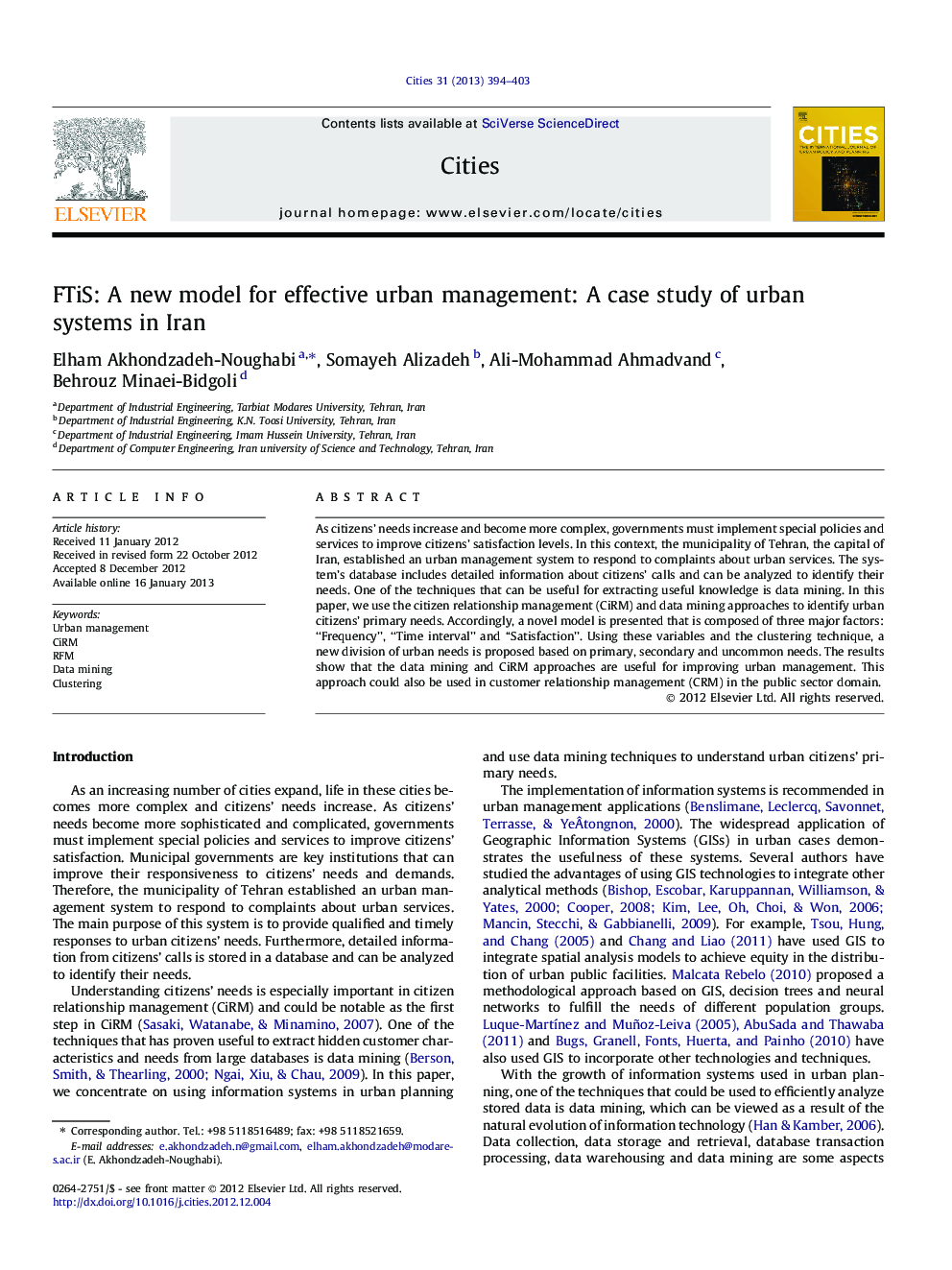| کد مقاله | کد نشریه | سال انتشار | مقاله انگلیسی | نسخه تمام متن |
|---|---|---|---|---|
| 1008534 | 1482363 | 2013 | 10 صفحه PDF | دانلود رایگان |

As citizens’ needs increase and become more complex, governments must implement special policies and services to improve citizens’ satisfaction levels. In this context, the municipality of Tehran, the capital of Iran, established an urban management system to respond to complaints about urban services. The system’s database includes detailed information about citizens’ calls and can be analyzed to identify their needs. One of the techniques that can be useful for extracting useful knowledge is data mining. In this paper, we use the citizen relationship management (CiRM) and data mining approaches to identify urban citizens’ primary needs. Accordingly, a novel model is presented that is composed of three major factors: “Frequency”, “Time interval” and “Satisfaction”. Using these variables and the clustering technique, a new division of urban needs is proposed based on primary, secondary and uncommon needs. The results show that the data mining and CiRM approaches are useful for improving urban management. This approach could also be used in customer relationship management (CRM) in the public sector domain.
Figure optionsDownload as PowerPoint slideHighlights
► Data mining and CiRM approaches are capable for effective urban management.
► A novel model named in FTiS is proposed to discover urban citizens’ primary needs.
► Urban needs are categorized into three groups: primary, secondary and uncommon needs.
► A satisfaction analysis is done to evaluate the performance of municipality.
Journal: Cities - Volume 31, April 2013, Pages 394–403